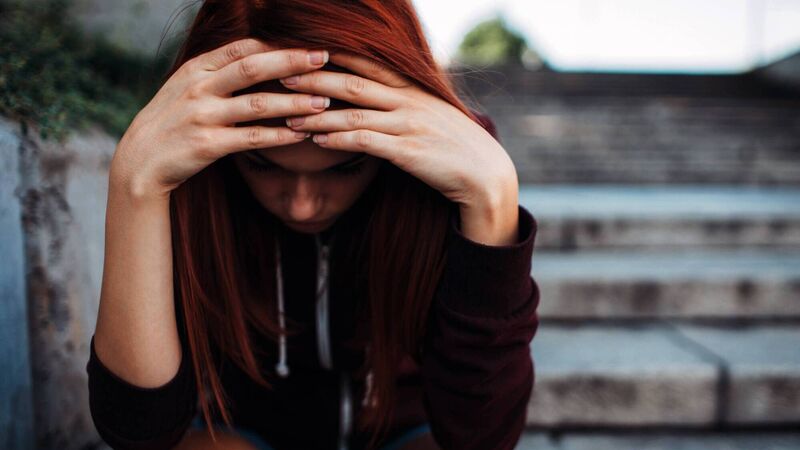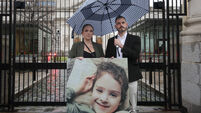Critical that every effort is made to mitigate risks of child sexual abuse

Discomfort amongst some professionals to really confront what is actually going on in these girls’ lives outside the care home can, unfortunately, lead to blaming the children for their own exploitation.
The sexual exploitation of children is a form of sexual abuse where a child or young person under 18 is manipulated, coerced or deceived into sexual activity in return for something they want or need and to the advantage of the perpetrator.
University College Dublin's Sexual Exploitation Research Programme (SERP) latest research reveals the disturbing truth that children and young people in residential care in Ireland, or who go missing from care, are being targeted for sexual exploitation by organised gangs or networks of predatory men.
Our report includes chilling accounts of girls being enticed out of care homes by groups of men and driven away to hotels and other locations, only to return hours or even days later, at times in a distressed state.
Drugs and alcohol are often involved in these encounters and sometimes the girls in question consider these men to be their ‘boyfriends’.
Some may wonder how this can be happening under the eye of the authorities.
But our new study found that this phenomenon is, by its very nature, hidden and difficult for many of us to identify, let alone understand.
Concerningly, this includes some of the very professionals tasked with keeping the most vulnerable young people in our society safe.
Much of the sexual exploitation reported in our study happens behind closed doors and involves sophisticated grooming of teenagers by predators, who in almost all cases, are adult men.
They target children in care and exploit the vulnerabilities and traumas that they carry with them from their earlier life experiences — the very experiences that have led them into care in the first place.
Many of the children have suffered breakdowns in their family relationships and attachments and are now looking for what one professional in our study described as “that relationship that gives them validation, affirmation and connection — [to feel] ‘I’m of value’”.
As our research shows, the grooming undertaken by predators is so covert and manipulative that young girls are fooled into thinking that these predators are their ‘boyfriends’, who love them and treat them well by buying them new clothes, underwear and jewellery or paying for their beauty procedures.
They are unable to see the potential danger or understand the power imbalance and dynamics that are at play with men who are many years older than them.
In the words of one research participant: “They go to meet their boyfriend in a hotel room and there’s like five other guys there … and they have to do things with these other people because this is what their boyfriend is telling them they have to do.”
Evidence in our report highlighted how this predatory, manipulative behaviour may be misunderstood by some professionals who are responsible for the protection of girls in care.
Girls may be viewed as simply ‘partying’ too hard or engaging in ‘risky behaviours’ of their own choosing.
They are sometimes deemed as nothing more than a nuisance for persistently going missing from care.
Discomfort amongst some professionals to really confront or even talk about what is actually going on in these girls’ lives outside the care home, coupled with a lack of understanding of the dynamics of sexual exploitation itself, can, unfortunately, lead to blaming the children for their own exploitation rather than placing the blame firmly on the shoulders of the perpetrators.
What we need to remember in all of this is that, even if a child is getting something they want in exchange for sex acts, this does not mean the encounter is not abusive and the man is not a perpetrator of sexual exploitation.
Under Irish legislation, engaging in sexual activity with a person under 17 years (the age of sexual consent), even if it appears consensual and involves no force or violence, constitutes rape.
Children who have been sexually exploited can find it difficult to disclose what has happened to them as they may be ‘under the spell of’ or even hugely fearful of the perpetrators, who, as one professional in our study explained “are criminals essentially … [who] threaten them if they divulge”.
Children and young people may experience enormous trauma, shame and guilt resulting from the sexual exploitation they have experienced.
So much so that they are often unable to even name it as exploitation when it occurs.
Professionals in our study recognise that this is a defence mechanism that the child needs to use in order to cope with this trauma and highlight that it can take children in their care a very long time to trust them enough to disclose their experiences.
While some may question what constitutes experiencing sexual exploitation versus engaging in allegedly ‘wild’, or ‘risky’ teenage behaviour, it is vital to remember in all of this that no young person is deserving of, or culpable for, the harms experienced through sexual exploitation.
Instead, children and young people need support and protection from predatory behaviour.
At times this will mean that professionals must walk a tightrope between recognising the exploitation and naming it, in a way that is non-judgemental so that the child will continue to engage with them, especially if the child themselves does not believe that the situation they are in is exploitative.
Sexual exploitation of vulnerable children and young people is happening under the eye of State authorities in Ireland.
It is therefore critical that every effort is made by those in positions of authority to take urgent action to mitigate these risks.
This includes continuing to receive the appropriate training in recognising the signs and risks of sexual exploitation and actually naming and confronting it so that no more of our vulnerable children and young people in care have to suffer the trauma of sexual exploitation in the future.













